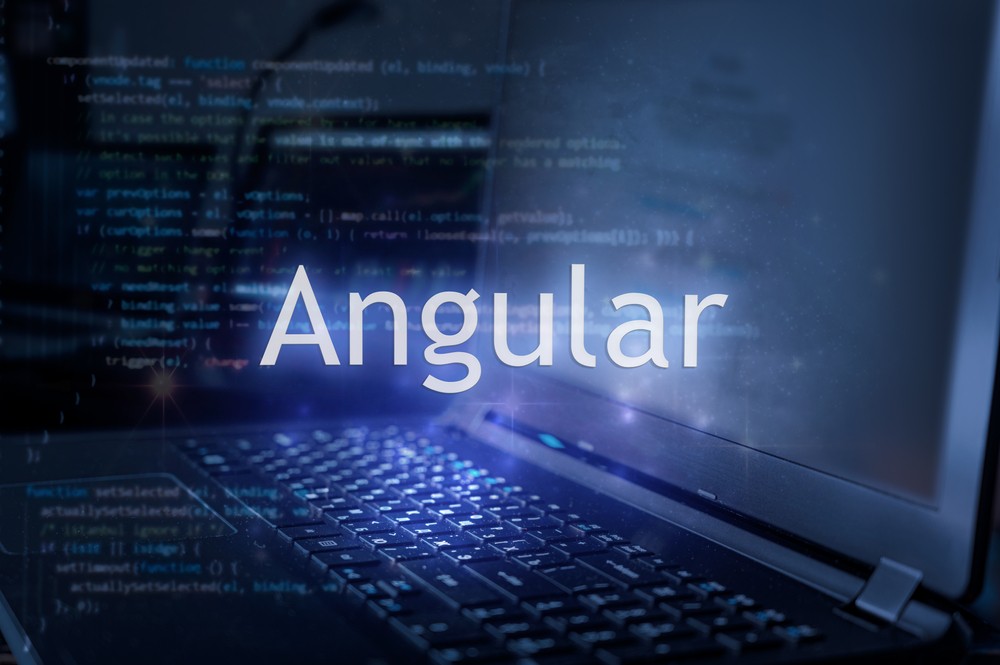In the ever-evolving realm of web development, the clash of titans, “Angular vs jQuery,” has taken center stage. Join us as we dissect the essence and the difference between angular and jQuery, aiding both newcomers and veterans in making informed technological choices.
What is Angular?
Angular is a widely used web development framework developed by Google that greatly simplifies the process of building web applications. By leveraging Angular, developers can create web apps that are highly responsive to user actions, ensuring quick and seamless user experiences. With its ability to instantly update web pages in response to user interactions, Angular improves the overall smoothness of web design. It is considered a significant advancement in web development and is highly recommended for those looking to build modern and interactive websites.
In summary, Angular is a comprehensive tool that seamlessly integrates various components, enabling developers to efficiently build web applications. By leveraging Angular’s capabilities, developers can create captivating and dynamic websites with relative ease and speed.
Features Angular
Embark on a journey to explore the remarkable and robust features that Angular, a leading front-end framework, brings to the table.
- Angular uses components. Components are code pieces for UI parts. Hence, they make it easy to build reusable UI elements.
- Angular has templates. These templates use HTML to define views. In the templates, you can combine HTML with Angular code. Hence, Angular lets you define the UI structure in HTML. It also lets you link data dynamically.
- Angular has dependency injection built-in. This makes connecting app parts simple. Services, components, etc., can be injected seamlessly.
- Angular has two-way binding. This binding syncs data automatically. It syncs data between model and view parts. Hence, any data changes show instantly on the UI.
- Angular supports cross-platform work. It can build web, mobile, progressive web, and desktop apps. Frameworks like NativeScript and Electron help.
What is jQuery?
Have you ever wondered how websites come to life with cool effects? How do those neat animations and handy features work? jQuery makes it happen. Let’s understand it step-by-step.
First, jQuery is like a magic toolkit for web designers. It’s a bunch of valuable tools that make web design easier. Instead of starting from zero, designers use jQuery to add flair to websites.
So, what exactly is jQuery? In short, it’s a fast, small, and feature-rich JavaScript library. Don’t let “library” confuse you. It’s just pre-written code functions. These functions help with tasks like moving around a web page, animations, and responding to user actions. In plain English, it helps make websites interactive and engaging.
Features of jQuery
- jQuery makes it easy to pick and change parts of a web page. Hence, with its simple selectors, you can quickly find and modify content or style.
- Also, jQuery simplifies handling user actions. Clicking a button or hovering over it is made easy. Developers can create interactive features.
- Additionally, jQuery works well with AJAX. AJAX lets web pages get data without reloading. jQuery makes these requests straightforward. Real-time updates are more effortless.
- Furthermore, jQuery has many animations and effects. It offers tools to add motion and interactivity. This includes simple slides or complex fades.
- Finally, jQuery handles cross-browser support well. It ensures your code works on Chrome, Firefox, Safari, and more.
Angular vs jQuery – The Major Differences
Angular and jQuery are both used for web work, but they do different things. jQuery is a tool to make things easier with websites, while Angular helps make interactive web apps.
Here’s a simple table that shows how they’re different.
| Feature | Angular | jQuery |
| Nature | A complete framework for building web applications. | A lightweight JavaScript library. |
| DOM Manipulation | Uses two-way data binding to auto-update the real DOM. | Directly manipulates the DOM. |
| Data Binding | Two-way data binding, linking the model and view seamlessly. | Requires manual intervention for data binding. |
| Dependencies | Often requires additional libraries for certain features. | Mostly standalone, but has plugins for added features. |
| Learning Curve | Steeper, given its comprehensive nature. | Relatively easier, especially for beginners. |
What to Choose for Web Development – Angular or jQuery?
So, you’re diving into web development. Naturally, you wonder: Angular or jQuery – which one to pick? First off, understand your project’s nature. For simple tasks, like animation or DOM manipulation, jQuery shines. It’s lightweight and straightforward. On the flip side, if you’re aiming for a robust single-page application, Angular is your best bet. It’s powerful and offers more features.
Plus, Angular two-way data binding is a game-changer. But remember, each tool has its strengths. Use them where they fit best. In essence, your project’s scope will guide your choice. Whether you lean towards Angular or jQuery, mastering either will undoubtedly boost your web development game. And as always, practice makes perfect.
You may also like: jQuery vs JavaScript: What’s the Difference?
Conclusion
Angular and jQuery are both useful in different ways. Angular works well for complex, dynamic apps. jQuery is better for simpler tasks. But the ZEGOCLOUD SDK brings them together. It lets you easily add real-time communication to Angular and jQuery apps.

With ZEGOCLOUD, you don’t have to choose between Angular or jQuery. You can use both and get the most out of each one. ZEGOCLOUD helps you make apps that are engaging and interactive. So don’t limit yourself to just Angular or jQuery. With ZEGOCLOUD video call SDK, voice chat SDK, chat SDK, and live streaming SDK, you can use both to make great apps.
Read more:
Let’s Build APP Together
Start building with real-time video, voice & chat SDK for apps today!










